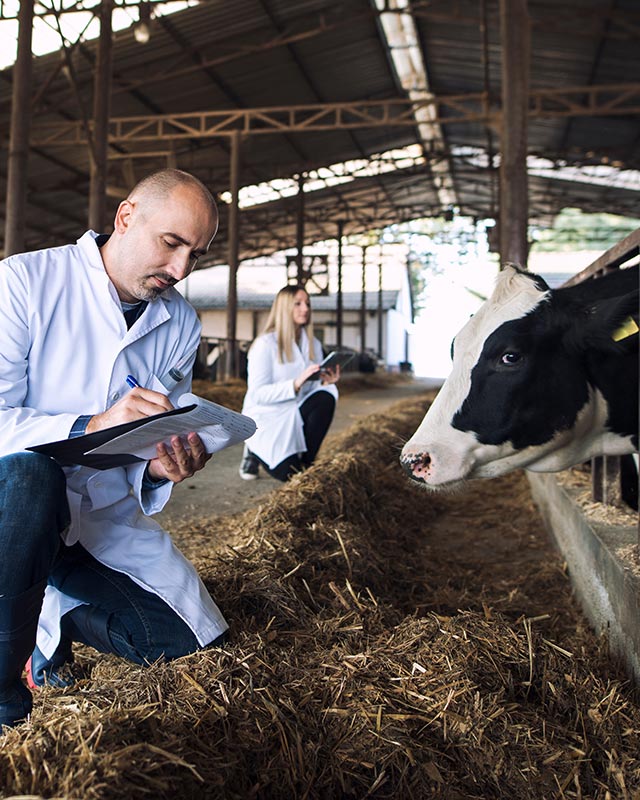The EU Deforestation Regulation (Regulation (EU) 2023/1115), published on 9 June 2023, represents a landmark initiative targeting deforestation and forest degradation linked to the production of specific commodities. Recognising the role of agricultural expansion in accelerating deforestation, this regulation mandates stringent measures to mitigate environmental impacts associated with commodities like cattle, cocoa, coffee, palm oil, rubber, soy, and wood. As consumption of these goods within the EU indirectly contributes to global deforestation, the regulation aims to reduce associated greenhouse gas emissions and biodiversity loss.
In this article, our National Technical Lead for Exports, Georgios Kakarantzas, details the implications of these changes and how they will impact EU exports.
EU Deforestation Regulation (EUDR) Criteria
Under the EUDR, operators can only market commodities within the EU if they meet “deforestation-free” and “legal” standards. These criteria are defined as follows:
- Deforestation-Free: This applies to agri-food products cultivated on land not subject to deforestation after 31st December 2020. In the case of meat, feed provided to cattle must likewise comply, being sourced from non-deforested land after 31 December 2020.
- Legal Compliance: Commodities must comply with the laws applicable in their country of origin. Such legislation may encompass land-use rights, environmental protection, forest-related regulations, third-party rights, labour and human rights, and the principle of free, prior, and informed consent, as outlined in the United Nations Declaration on the Rights of Indigenous Peoples. Relevant laws also include those governing taxation, anti-corruption, trade, and customs. Further details and examples of relevant legislation can be found in the Commission Guidance
Prior to placing a regulated commodity on the EU market, operators must submit a due diligence statement containing essential details such as:
- Production country
- Geolocation of production sites
- A comprehensive risk assessment.
Only where assessments indicate negligible, or no risk of deforestation or legal non-compliance can the product proceed to market.
Obligations for Non-EU Producers and Suppliers
Producers and suppliers from non-EU countries will be required to provide the following data to EU businesses placing these commodities or products on the EU market:
- Geolocation of all plots of land where the commodities were produced
- Date or time range of production.
In this context, “Plots of land” refers to areas within a single property that are sufficiently homogenous to allow for an accurate assessment of deforestation and forest degradation. “Geolocation” refers to latitude and longitude coordinates to at least six decimal places. For land plots larger than 4 hectares, polygons—defined by latitude and longitude coordinates outlining each plot’s perimeter—are required.
For products sourced from different plots of land, details for each plot are mandatory. Specifically for bovine meat, geolocation refers to the establishments where the cattle were kept.
Implementation Challenges and Regulatory Deadlines
Although the EUDR is designed to reduce the EU’s contribution to global deforestation and limit associated greenhouse gas emissions, implementation challenges remain due to the considerable administrative burden, requiring extensive preparation across the supply chain in both EU and non-EU countries.
Concerns have emerged that many operators may not be fully prepared to meet these requirements by the initial deadlines of 30 December 2024 (for large companies) and 30 June 2025 (for micro- and small companies). In response, the European Commission proposed a one-year enforcement extension, shifting deadlines to 30 December 2025 for large companies and 30 June 2026 for smaller entities. This proposal, subject to approval by the European Parliament and the Council, is intended to support more effective implementation. On 16 October, the Council expressed agreement with the Commission’s proposal, and on 14 November 2024, a full session of the European Parliament (Plenary) voted to adopt the extension and additional amendments, with 371 votes in favour, 240 against, and 30 abstentions.
Additionally, the Commission has published additional guidance documents and a stronger international cooperation framework to aid global stakeholders, EU Member States, and third countries in preparing for the EUDR’s requirements. The guidance is divided into 11 chapters covering a diverse range of issues such as legality requirements, timeframe of application, agricultural use, and clarifications on the product scope. All of these are supported by tangible scenarios. In addition, the latest FAQ features over 40 new additional answers to address questions raised by a diverse range of stakeholders from around the world.
Micro and small companies will benefit from a lighter regime, which is also detailed on a new dedicated webpage.
Information for the general public on the Commission website has also been updated and reorganised for easier understanding by all.
Benchmarking Producer Countries
The EU will evaluate producing countries for deforestation and forest degradation risk, assigning them to one of four categories—“no risk,” “low risk,” “standard risk,” or “high risk”—by 30 June 2025.
These risk assessments will leverage scientific data from the UN Food and Agricultural Organization (FAO) and other indicators, such as forest cover loss and compliance with deforestation laws. Classification into risk categories will not constitute a ban on imports but will influence the level of scrutiny required for products based on the risk category of the origin country. On the basis of this data, most countries are expected to be classified as low risk. High-risk countries will be those that are subject to sanctions by the UN Security Council and the EU Council. Countries classified as “no risk”, defined as countries with stable or increasing forest area development, would face significantly less stringent requirements as there is a negligible or non-existent risk of deforestation. The full methodology is currently being developed by the Commission and will be presented in future meetings of the Multi-Stakeholder Deforestation Platform and other relevant meetings.
Completion of the IT System for Due Diligence
An IT system for submitting due diligence statements is expected to be operational by December 2024, with early registrations commencing in November. This platform will facilitate the streamlined processing of compliance documentation for operators and traders.
Potential Implications on International Trade
While the EUDR does not directly pertain to Official Veterinarians’ export certification for live cattle and bovine meat/products, its extensive regulatory requirements could influence international trade patterns for affected commodities, potentially impacting bovine meat/products and other regulated goods.
You can find out more about the EU Deforestation Regulation, here.
Or for more information about our Export Health Certification services, head to: https://eandj.co.uk/ehc/
Georgios Kakarantzas
Georgios is our National Technical Lead for Exports, overseeing national standards and legislative changes for export certification. He has worked at E&J for over 20 years, starting as an OV in 2003, before moving to specialise in exports.











